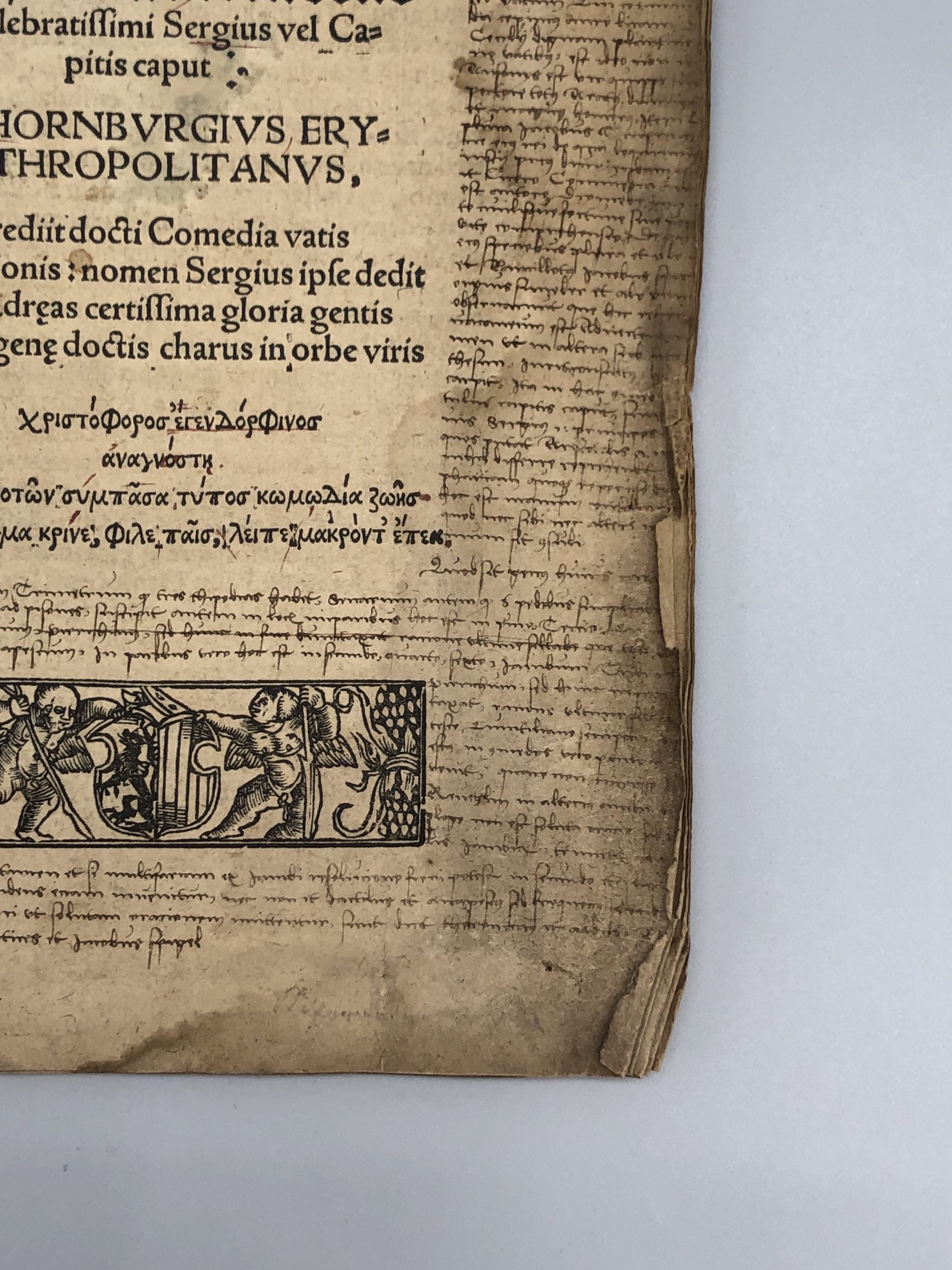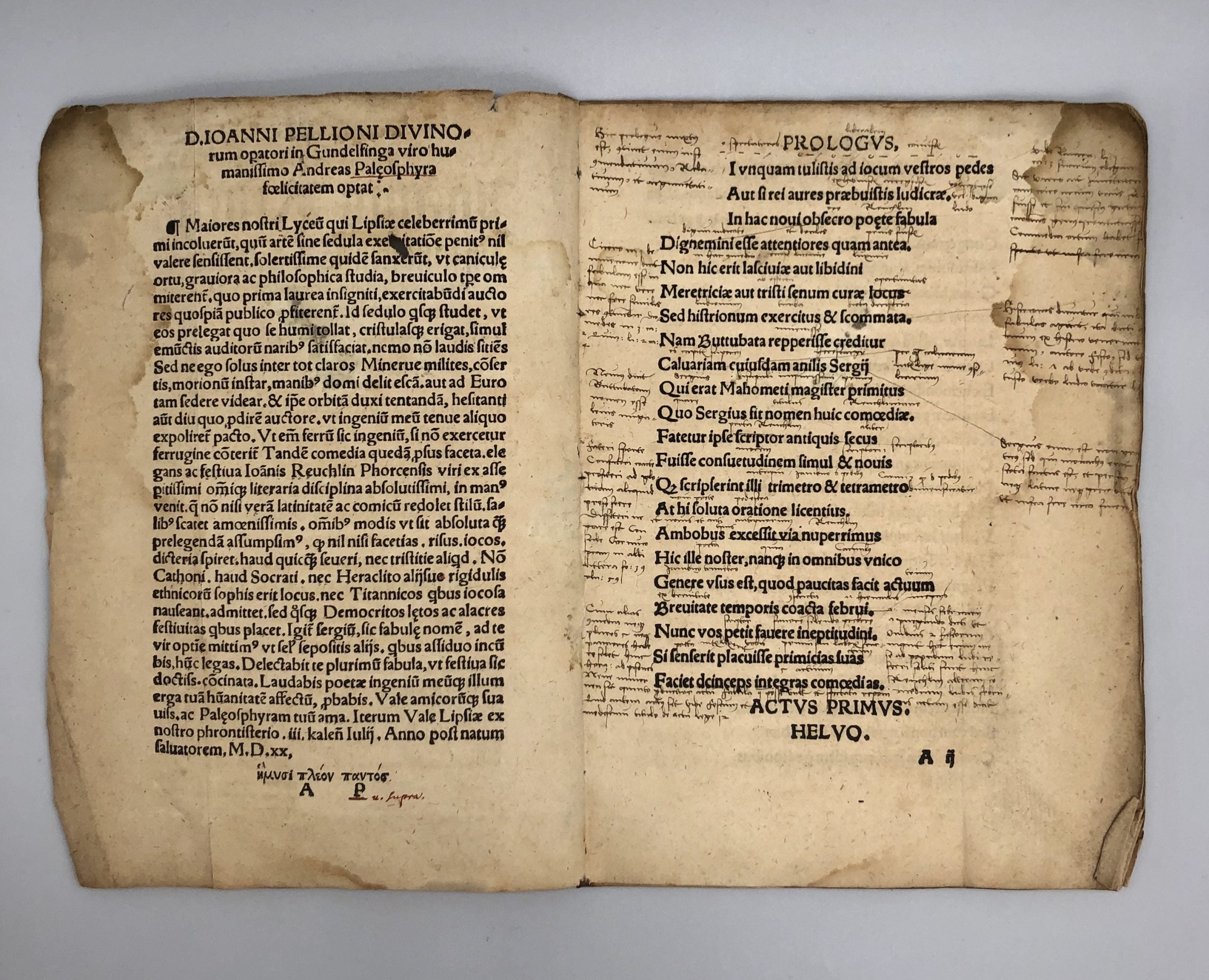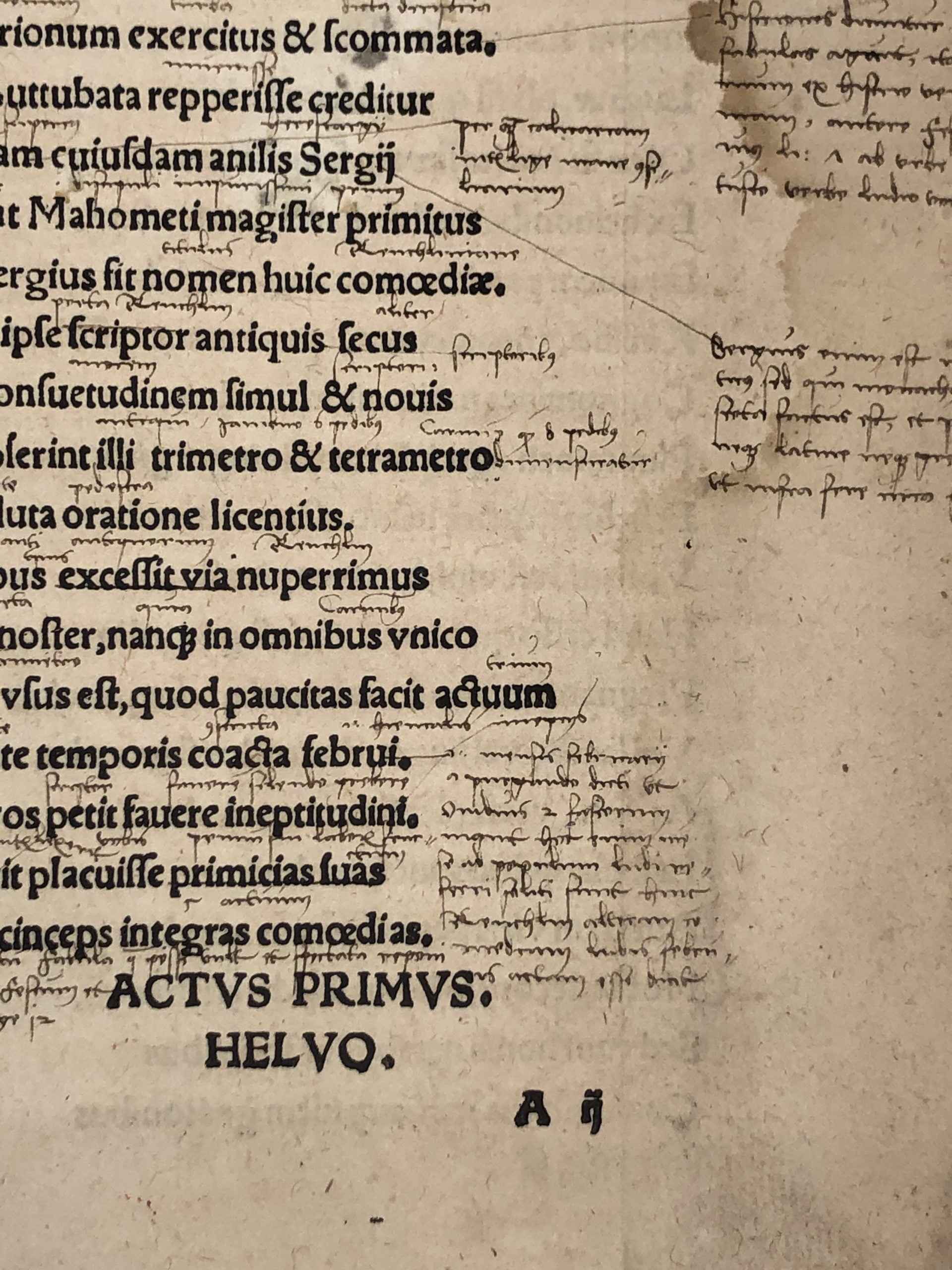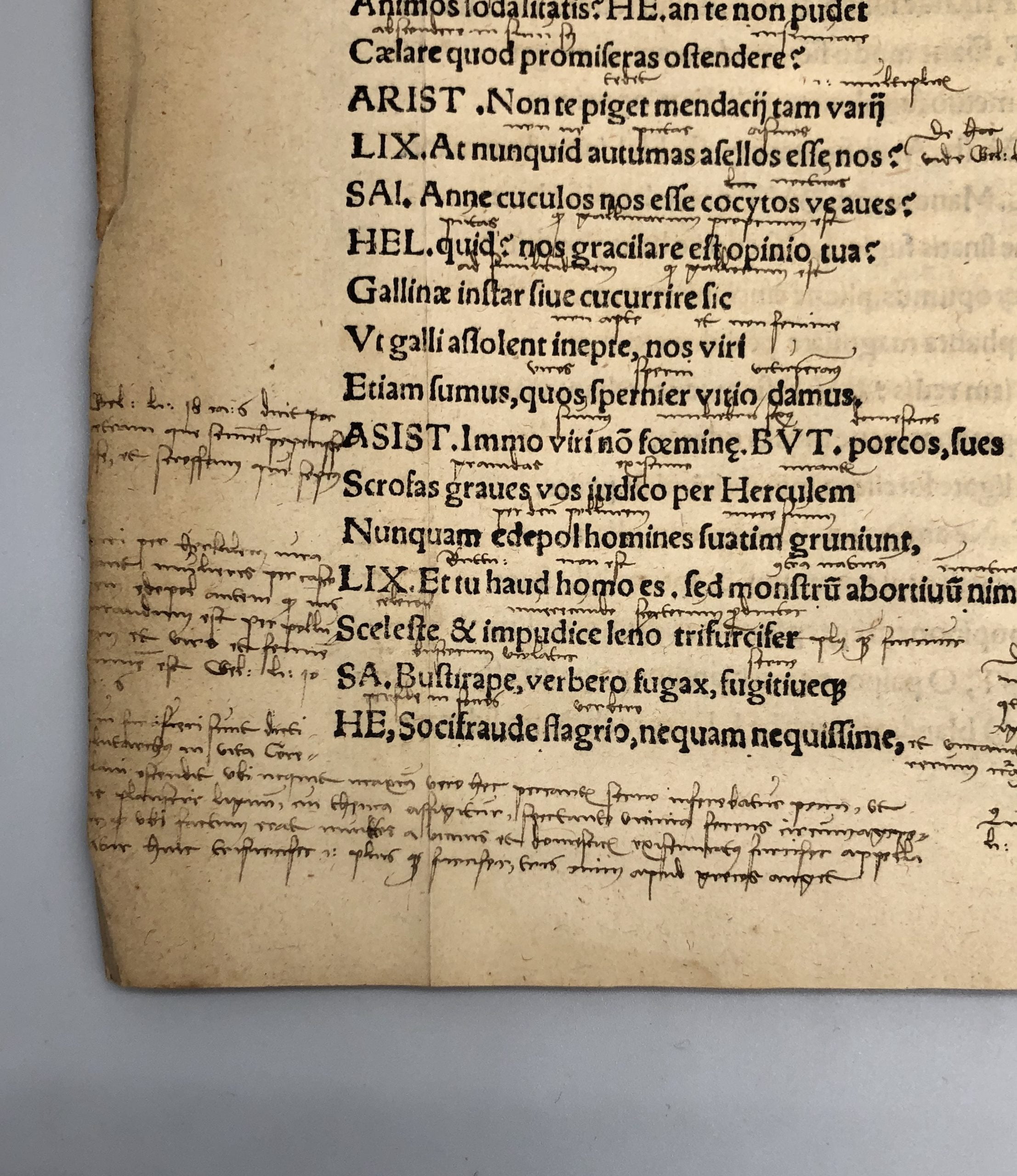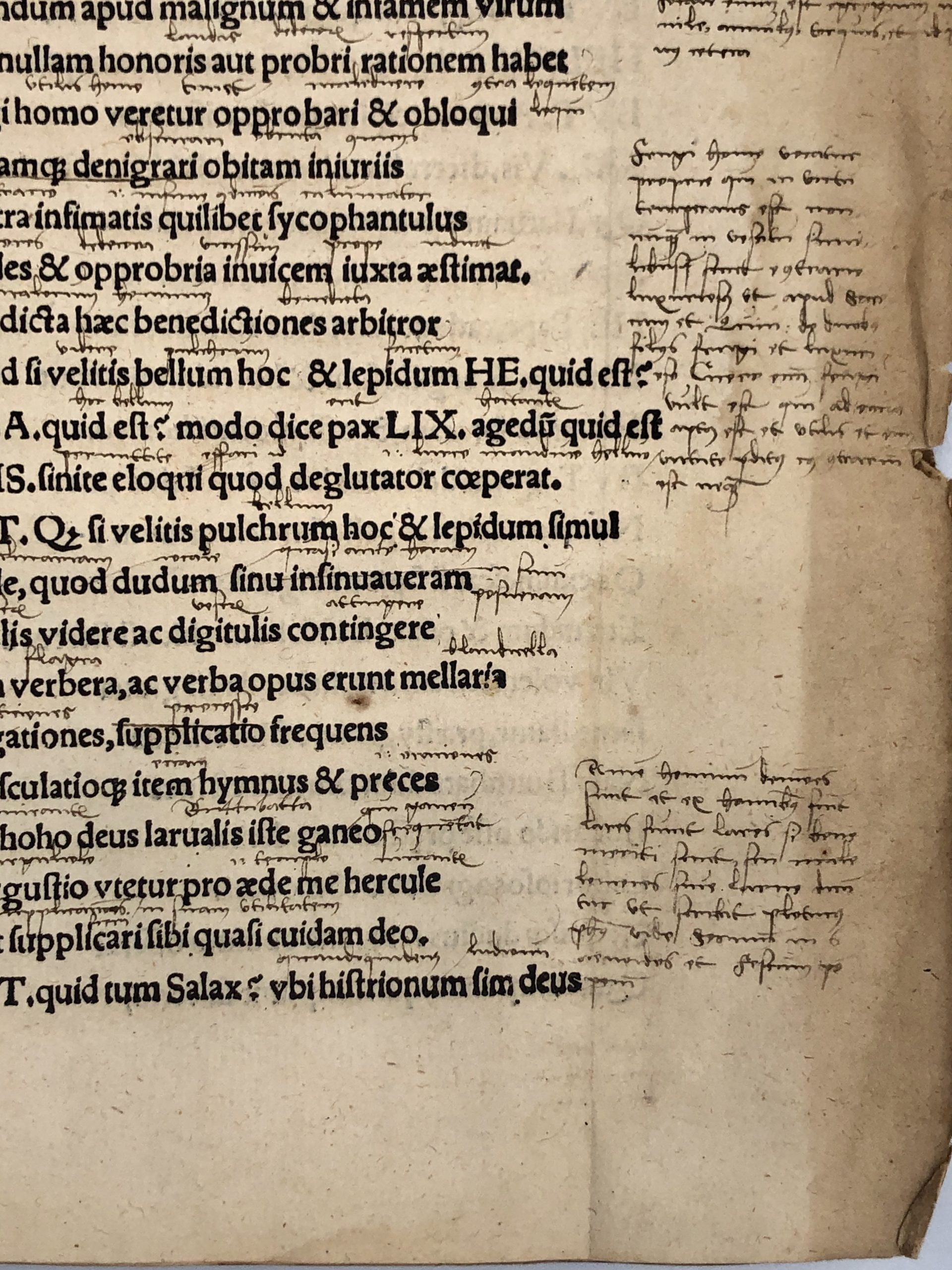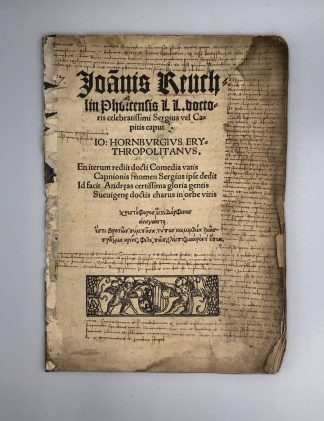REUCHLIN, Johann.
NUMEROUS CONTEMPORARY ANNOTATIONS
Sergius vel capitis caput
[Leipzig, in aedibus Valentin Schumann, 1520]£3,500.00
Small 4to. 12 unnumbered ll., A-B6. Roman letter, little Greek. Woodcut ornament with Leipzig arms to t-p. Slight age browning, minor tear to upper edge of t-p and small hole just touching two letters, light water stain and minor fraying to first outer blank margin, verso of couple of ll. dust-soiled, outer blank margin of last seven ll. trimmed. Disbound with traces of sewing, first five ll. with extensive contemporary annotations.
Interesting annotated copy of this famous anti-Catholic satirical play. Johannes Reuchlin (1455-1522) was a German humanist, and one of the earliest scholars of Greek in Germany, trained at Paris and Basel; he was known for his theories of Greek pronunciation. Having fled to Heidelberg after the death of his patron, Count Eberhard of Württenberg, he gained the position of tutor to the children of Philip, Count Palatine of the Rhine. His sister’s grandson was the Protestant Philip Melanchthon, with whom he fell out after the Reformation. Despite his Catholicism, Reuchlin was critical of aspects of the Roman Church like the frequently debatable behaviour of monks and the commerce of false relics—the subject of this play. First published in 1504 and much reprinted, ‘Sergius’ marked ‘the beginning of Neo-Latin comedy in Germany’ (Dall’Asta, ‘Lateinische Drama’, 14). Its title refers to Sergius/Bahira, a Nestorian monk of the 6th century—and the narrative persona of Reuchlin’s adversary, the Augustinian Conrad Holzinger—who prophesized to Muhammad his glorious future. Considered a heretical monk and the inspiration to the Christian content of the Qur’an, he was a frequent presence in Renaissance anti-Islamic writings. In the play, Sergius stands as the heretical monk par excellence—’the chief of the chiefs’ of ‘all lechery […], the head without soul or reason’. The other characters take on the role of social critics following the ancient Roman comic tradition. The contemporary annotator was especially interested in Act I. He studiously noted information on Reuchlin on the t-p, and appears to have been studying the text as a fine example of Neo-Latin prose. He glossed it with interlinear and marginal notes on metrics (linked to debates on Neo-Latin poetry), figures of speech, synonyms and references to Quintilian and the work of contemporary scholars like Jacob Spiegel, close to Protestant humanist circles.
No copies recorded in the US.USTC 669227; BM STC Ger., p. 733 (not this edition). Not in Graesse. M. Dall’Asta, ‘“Histrionum exercitus et scommata”’, in Das lateinische Drama der Frühen Neuzeit, ed. R.F. Glei and R. Seidel (Tubingen, 2008), 13-30.In stock



